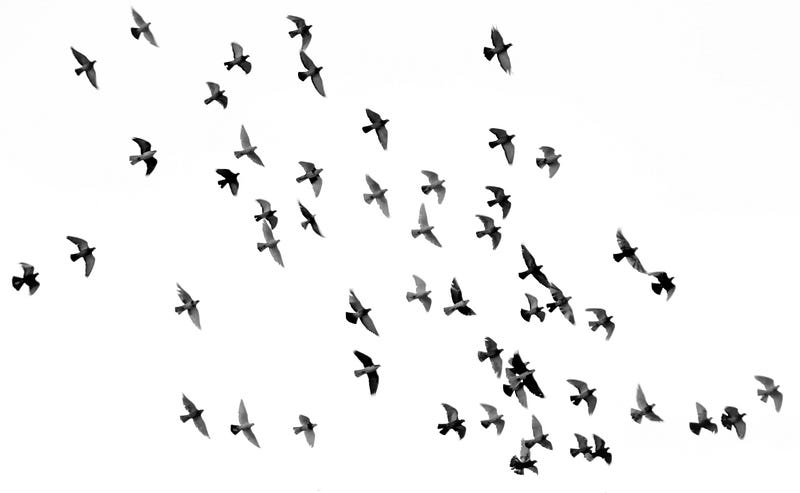The Silent Crisis: The Disappearance of Birds in North America
Written on
Chapter 1: A Grim Overview
The decline of bird populations across North America has reached alarming levels, with an estimated loss of 3 billion birds since 1970. This significant reduction is particularly concerning as it primarily affects the most common species, making it difficult for many to recognize the severity of the situation.
According to a recent analysis led by Kenneth Rosenberg from Cornell University and the American Bird Conservancy, bird populations have decreased by nearly 29%. "This is a staggering result," Rosenberg states, highlighting the study's critical nature.
Section 1.1: The Passenger Pigeon Legacy
In a poignant historical moment on September 1, 1914, Martha, the last passenger pigeon, died, marking the extinction of her species. This event followed decades of decline as hunters decimated what was once the most populous bird in the world. Despite their initial abundance, the decline went largely unnoticed.

Section 1.2: Surprising Findings
This new research reveals that the most common birds are experiencing the steepest declines. “The common wisdom was that we’d see the rare and threatened species disappearing,” Rosenberg explains. Instead, 90% of the lost birds belong to just 12 families, including familiar species like sparrows and warblers.
The Disappearance Of North American Birds and What We Can Do About It
In light of these findings, it's crucial to understand the implications of this loss. The following video explores the significant decline of North American birds and suggests actionable steps to mitigate the crisis.
Chapter 2: The Broader Impact
The decline in bird populations has far-reaching consequences. With 3 billion fewer birds to help manage insect populations and disperse seeds, ecosystems are suffering. Kristen Ruegg from Colorado State University emphasizes that “our forests and backyards will continue to grow quieter with every passing year.”
Section 2.1: The Bigger Picture
This loss is part of a broader pattern of “biological annihilation,” affecting not just birds but numerous other species as well. A significant percentage of vertebrate species are also declining, indicating a troubling trend for biodiversity.
The Birds I Never Met | North America's Extinct Birds
This video provides insight into the various species that have already vanished from North America, highlighting the urgency of the situation.
Section 2.2: Challenges Ahead
While the study did not delve into specific causes of the declines, habitat loss is widely recognized as a primary factor. Grassland birds have been particularly affected as wild prairies are transformed into agricultural land, resulting in the disappearance of 700 million birds.
Chapter 3: Taking Action
Mitigating these declines requires collective action. Organizations have outlined several steps individuals can take, such as making windows safer, keeping cats indoors, and supporting bird-friendly agricultural practices.
Section 3.1: Success Stories
Despite the grim situation, there are examples of recovery. The populations of raptors have doubled since the 1970s due to conservation efforts like the ban on the pesticide DDT and hunting restrictions. These successes show that it is possible to turn the tide when people come together.
Section 3.2: The Political Landscape
However, recent political moves threaten bird conservation efforts, such as proposals to weaken the Migratory Bird Treaty Act. Rosenberg warns, “This is the absolute worst time to be weakening protections.”
Ultimately, the fight to protect North American birds requires a unified voice from the public to match the influence of other lobbying groups. “We need to raise our voices,” Rosenberg urges, advocating for action to ensure a future where birds can thrive once more.